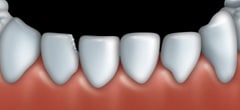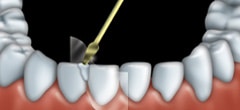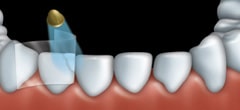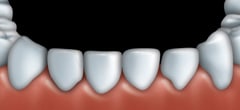What is bonding?
Also known as bonded restoration, bonding is a painless way to make minor repairs to teeth. In most cases, several teeth can be bonded in one dental visit. Bonding uses tooth-coloured material, usually composite resin. Composite resin is put on the tooth, then shaped and hardened with light. The composite resin can be matched to your teeth, shaped to look like the missing part of a chipped tooth, and used to fill spaces or repair breaks.




 Procedure
Procedure
The dentist places a matrix between the tooth being treated and its neighbouring tooth. (A matrix is a thin, clear plastic film that protects other teeth from stray composite resin.) A mild chemical is then applied to the tooth in order to make it a little rough. This helps the composite resin to bond or stick to the enamel of your tooth.
The composite resin that matches the colour of your natural teeth is chosen so that the bonding blends in with your teeth. Your dentist puts the composite resin on your tooth in layers. A light is used to harden each layer of the composite resin.
After the last layer of composite resin is hardened, your dentist shapes and polishes it to form your tooth. The finished tooth looks natural and smooth.
At your next dental visit, your dentist will examine the bonding and polish it if needed. Over time, the bonding may wear down and your dentist may touch up the bonding with more composite resin.
